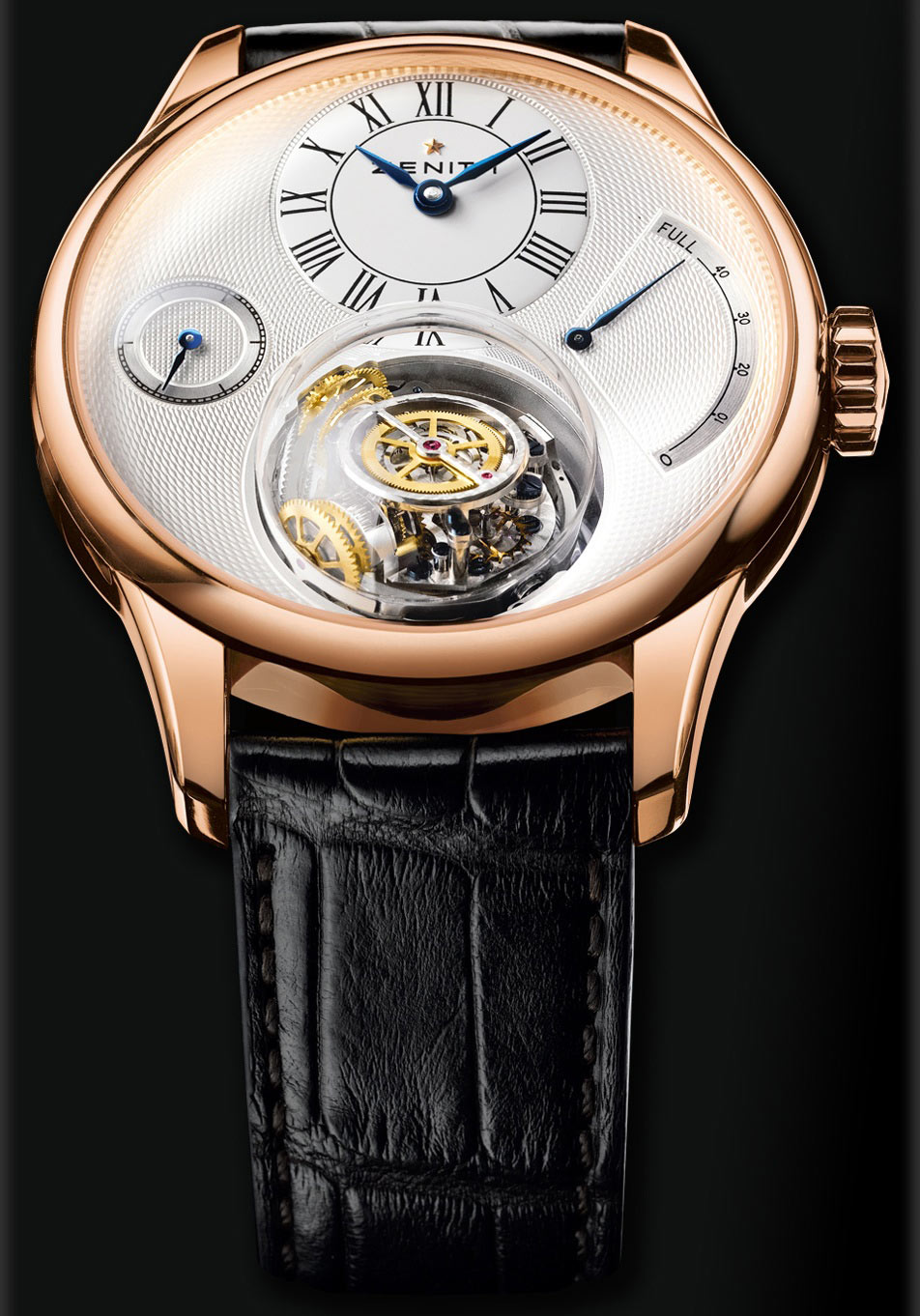Zenith recently announced a new wristwatch based on the design of a marine chronometer – the Christopher Columbus. By housing the regulating organ and escapement in a self-regulating gyroscopic module they can guarantee flat positioning, and therefore reduce rate variations. Tourbillons fix rate variations based on the average of 4 to 6 positions, and inclined and gyrotourbillons average even more positions, but this is still not as accurate, according to Zenith. Zenith’s new patented 0G system keeps the escapement in a constant horizontal position, and therefore further minimizes rate variations.

The movement is a manually wound calibre Academy 8804. It has 45 jewels and operates at 36,000 vph (5hz), with a 50 hour power reserve. The case is 45 mm in diameter and comes in either rose, white or yellow 18k gold (limited edition of 25 pieces per variation). Water-resistance is 30 meters.
Zenith calls this timepiece a “Grande complication”, which is not necessarily true. A “Grand complication” has a set of requirements that this timepiece does not meet. It is, however, an extremely complicated timepiece that with the help of the gyroscopic module, can keep the rate consistent, even with changes in the position of the timepiece. This is the first wristwatch to feature this type of function, and that by itself is meritorious.
However, I do question how comfortable the round glass cage feels protruding through the caseback (at least 5 mm) – directly into your wrist.
UPDATE: I didn’t catch this earlier, and the press release left out this information, but this movement appears to be derived from the Zero-G Multi-Dimensional Tourbillon that was introduced at Baselworld 2008.
References: 27.00.2218.630 Yellow Gold, References: 27.17.0003.940 Rose Gold, References: 27.31.0003.940 White Gold
Retail $209,000










